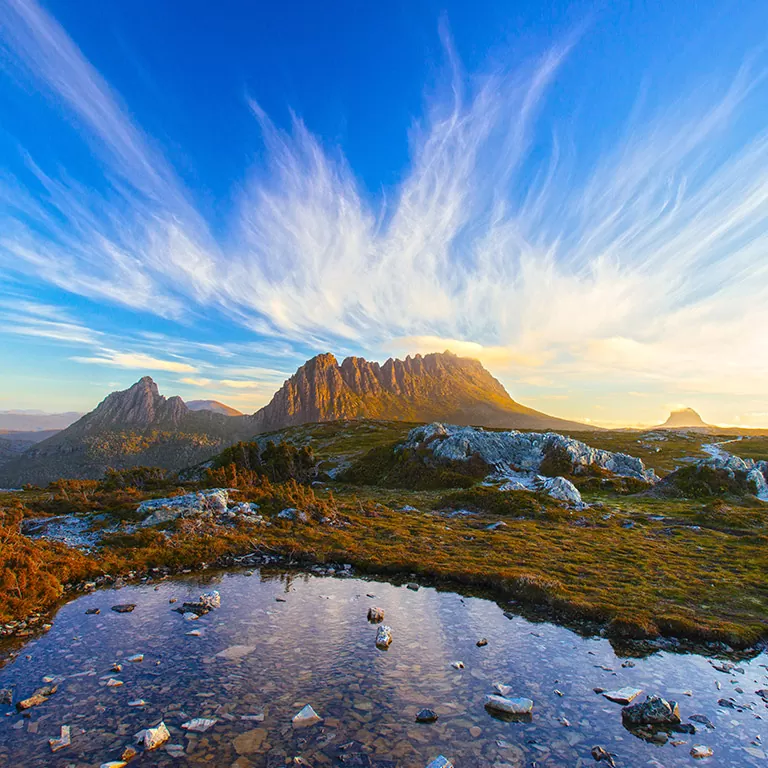
Located 240km from the southeast coast of Australia, the island of Tasmania has impressive numbers. With a total area of 68,401 square kilometers, measuring 300km from north to south and 340km from east to west, and with over 519 thousand inhabitants, it is the 26th-largest island in the world, and has no fewer than 334 adjacent islands, 45% of which are natural reserves, considered World Heritage sites. In 1901 Tasmania became a state through process of the Federation of Australia, and is the country’s smallest federative unit, with 40% of its territory formed by national parks and reserves, besides land substantially made up of mountain peaks.
With a temperate climate, Tasmania differs from the aridity found in a large part of the rest of the country, and is outstanding for the purity of its air and environment. Hobart, the state capital, offers many attractions to those who choose to trade the capital for a natural paradise. Beginning with Mount Wellington, 1271 meters high, rich in biodiversity, showing that there nature is in command. Everything in the state is described by expressions such as “located in the middle of the mount, behind the mount, at the foot of the mount”. The state also boasts the Royal Tasmanian Botanical Gardens, an area of popular recreation with a varied collection of plants. Besides, of course, the Hobart Synagogue, the oldest in the country.
Salamanca Square is another popular point in the capital, where, every Saturday, the Salamanca Market takes place, a traditional street-market , selling local souvenirs, books, clothes and delicious gourmet food, among other things. The Port Arthur Penitentiary is another attraction, the point which receives the most visitors. Built to hold “the empire’s worst criminals”, the prison draws attention due to the remnants of the convicts’ tortuous past.
In short, besides its tourist attractions,Tasmania is a real invitation to get in touch with nature: there are over 2 thousand kilometers of trails among 18 National Parks far from civilization. To live in or visit the island is to fall in love constantly either with the beautiful landscapes or with the animal biodiversity that includes the famous Tasmanian devil – the largest carnivorous marsupial in the world, and symbol of the island, though only seen in protected venues – or a visit to the penguin colonies in the Bichenos region.











